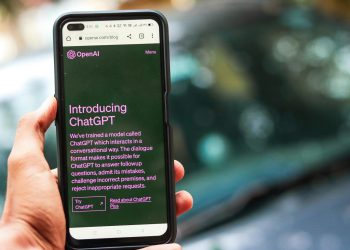Understanding Large Language Models
Introduction to LLMs
In a world that's always online, large language models (LLMs) have really flipped the script on how we engage with text. Think of them as super smart algorithms that have been schooled on heaps of data, allowing them to ace various language tasks like translating stuff, shortening verbose text, or coming up with new context. Take OpenAI's GPT-3 and GPT-4, for example. They're like the rock stars of language models, showing off the power of these high-tech systems.
LLMs like GPT-3 are all about numbers, boasting billions of parameters to spit out human-like text in a bunch of settings. This heavyweight data training lets them know what’s what, forecast what’s coming, and crank out content that's fluent and brainy.
| Model | Number of Parameters | Training Data Size |
|---|---|---|
| GPT-3 | 175 billion | Tons of gigabytes |
| GPT-4 | Likely more mega-sized | Even more data |
Significance of Transformer Networks
When it comes down to the magic behind LLMs, it's all about those transformer networks. They don't grind through data step-by-step like old-school models. Instead, they use self-attention tricks and innovative encoding to work through data like jazz improvisation—you know, non-sequentially. This breakthrough means bits of data can play off one another over long sentences, picking up on complex connections and meanings.
Transformers come with an encoder and decoder setup, armed with self-attention. This lets the model zero in on different input sequence bits, figuring out which part is pulling the most weight. So, transformer models often come up with text that’s spot-on and on the money.
| Component | Function |
|---|---|
| Encoder | Wraps the input data into a fancy abstract form |
| Decoder | Spins that abstract form back into a series of words |
| Self-Attention | Helps the model judge what’s important or not |
If ripping apart the mechanics of transformers gets you going, make sure you hit up our section on transformer models. Seeing how these transformer networks handle complex data connections is crucial in shaping hefty language models.
Grappling with LLMs and what sets transformers apart gives us a peek into how these big language models tick. This know-how is the bedrock of advanced AI journeys. To check out what these models can do in the real world, swing by the applications of large language models section.
Core Components of Large Language Models
We’re about to break down the magic ingredients that make up large language models (LLMs), focusing on chunks like tokenization, embeddings, and the attention trick. Let's see how these pieces come together to help LLMs speak our language.
Tokenization and Text Division
Tokenization is a bit like slicing bread – you break text into bite-sized bits called tokens. These can be whole words or mini-word pieces, or even just letters. It’s the step that translates words into something the model can actually chew on.
| Tokenization Type | Example: "Transformers are powerful models" |
|---|---|
| Word-Level | Transformers, are, powerful, models |
| Subword-Level | Trans, formers, are, power, ful, models |
| Character-Level | T, r, a, n, s, f, o, r, m, e, r, s, a, r, e, p, o, w, e, r, f, u, l, m, o, d, e, l, s |
Choosing how to slice these words can totally change how fast and smart your LLM can get. Cracking complex words into their smaller bits can help the model make sense and even speak more naturally. Check out more on this in our language model training data.
Embeddings and Semantic Representation
After text becomes tokens, they’re transformed into embeddings – multi-dimensional vectors that’ve got the scoop on what every token means. This gives the model a kind of sixth sense for context and nuance (AWS).
| Token | Embedding Vector (Example) |
|---|---|
| Transformers | [0.27, -0.13, 0.53, …] |
| Powerful | [0.73, 0.91, -0.44, …] |
These vectors are packed with smarts that help LLMs spot meanings in words, like how "powerful" and "strong" sorta mean the same thing. Explore this more with our piece on deep learning language models.
Attention Mechanism in LLMs
Attention mechanism? Think of it as a mental spotlight in transformer architectures. It shines on important words, making sure no crucial detail gets lost (Appy Pie).
Self-attention, that superpower, checks how words relate across the board, making sure it picks up on the context of each word.
| Input Sequence | Attention Weights |
|---|---|
| Transformers are powerful models | |
| "Models" | [Transformers: 0.2, are: 0.1, powerful: 0.6, models: 1] |
| "Powerful" | [Transformers: 0.4, are: 0.2, powerful: 1, models: 0.3] |
With this self-attention, telling stories on a huge scale becomes swift and savvy, as the model spots patterns faster (NVIDIA).
Getting a handle on these building blocks shows what runs under the hood of LLMs. By getting tokenization, embeddings, and attention on lockdown, we can better understand what these generative AI models can really do.
Working Mechanism of Large Language Models
Let's break down how large language models (LLMs) tick and where they show off their skills. We'll take a peek at their training and the little tweaks that make them ace specific jobs.
Training Process of LLMs
Training LLMs is all about allowing them to learn from heaps of text without needing loads of labeled examples. They crack the code of patterns and context purely from their material (NVIDIA).
- Data Collection: Start with scooping up a massive pile of good text. This stash can include books, articles, plus online content like what folks post on the web and social media.
- Tokenization: The big bundle of text gets chopped into pieces, called tokens. This lets the model juggle the text more smoothly. Curious about this chopping act? Check Tokenization and Text Division.
- Initialization: The model's settings begin as guesses ready to change, serving like a brain's starting kit (Elastic). As training rolls, these settings tweak to get more things right.
- Unsupervised Learning: Here’s where the model plays Prediction Game: guessing the next word in a chain and learning from its misses. It's like showing the model language selfies until it gets familiar with the scene (AWS).
Fine-Tuning for Specific Tasks
Once the basics are solid, you can jazz up the LLM to nail down precision tasks with fine-tuning—essentially a makeover with some task-specific polish.
- Supervised Data Collection: Grab specific data linked to the task you wanna polish the model for, like texts tagged with emotions for sentiment sniffing.
- Model Customization: Fine-tune the model’s dials with this data to score high on the specific task you're eyeing (Elastic).
- Prompt-Tuning: Rather than a makeover, sometimes a warm-up quick tune is enough; provide the model with task-specific cues and see how it edges the task.
| Model Type | Initial Training (Unsupervised) | Fine-Tuning (Supervised) |
|---|---|---|
| GPT-2 | Massive Text Binge | Tailored Task Bits |
| BERT | Loads of Text to Chew On | Examples with Added Spice |
| GPT-3 | Bigger Text Buffet | Quick Tasks with Prompts |
Take a closer gander at the state-of-the-art language models for more on LLM varieties.
LLMs lend a hand across fields, spicing up tasks from writing auto-magic scripts to tracking feelings in texts. Interested in their full range? Peek into applications of large language models. Fine-tuning acts like a refinement tool, ensuring those massive models hit the bullseye in action.
Getting the hang of these models empowers us to wield them awesomely in AI realms. Whether you're dealing with BERT, GPT-3, or rocking OpenAI's GPT-4, it’s all about good training and smart fine-tuning. Learn more in large-scale language generation and fine-tuning language models.
Applications of Large Language Models
Industry Impact of LLMs
Alright, let’s talk about Large Language Models (LLMs) and how they're changing various industries. They’ve stepped up operations, made customers happier, and brought fresh ideas to the table. Here's a rundown of how LLMs are shaking things up.
| Industry | Applications |
|---|---|
| Retail & eCommerce | Personal shopping advice, handling customer questions, guiding purchases via chatbots, crunching data for picks |
| Healthcare | Helping diagnose, tracking patient vitals, finding new drugs, scanning health records, training with simulations |
| Marketing | Supporting research, chatbot services, custom-fit marketing suggestions |
| Government | Breaking down policies, boosting citizen chat, keeping ears on social media, spotting frauds, translating docs |
Figures courtesy of our friends at ODSC - Open Data Science
Retail & eCommerce
Over in retail and eCommerce, LLMs make shopping personal and smooth. Think of them like your personal assistant, suggesting things you might like, answering your questions, and guiding your shopping journey with handy chatbots. It's like having a smart buddy who remembers your last purchase. To dig deeper, check out our section on applications of large language models.
Healthcare
In healthcare, LLMs are like superheroes. They help doctors with diagnoses, watch over patients, discover new medicines, and even use your health records to boost care. They make learning fun with interactive simulations, helping both doctors and patients. Want to explore more? See our articles on large language models and natural language processing models.
Marketing
LLMs lend a helping hand in marketing by aiding research, running customer service chatbots, and serving up personalized recommendations. Your customers get what they want, and your business gets happy clients. Our section on generative AI models gives the lowdown on these efforts.
Government
The government’s games are changing with LLMs. They help with policy breakdowns, making citizens feel heard, keep tabs on social media for emergencies, translate documents, and even spot fraudulent activities. All this helps make public services sharper. Our section on state-of-the-art language models digs into this more.
Real-Life Applications
LLMs aren’t just imaginary tech magic. They're out there, making waves in real ways.
| Application | Example |
|---|---|
| Virtual Assistants | Everyday helpers like Google's Assistant, Amazon's Alexa, Apple's Siri |
| Chatbots for Customer Service | Automated online helpers that solve problems round the clock |
| Content Generation | Nifty writing helpers like OpenAI's GPT series, crafting articles, stories, and more (read about GPT-3) |
| Translation Services | Live translators like Google Translate, smashing language barriers |
| Sentiment Analysis | Tools picking apart social media vibes and reviews to improve stuff |
| Personalized Learning | Smart learning platforms that mold content to fit every learner's pace and preferences |
Ready to see these powers in action? Dive into our articles on fine-tuning language models and AI language models.
Virtual Assistants
Virtual assistants, like Google's Assistant, Amazon's Alexa, and Apple's Siri, are built on LLMs. They make life easier, tackling tasks, answering questions, and dishing out info just when you need it.
Chatbots for Customer Service
With LLM-fueled chatbots, businesses hit the fast lane in customer service. These nifty tools handle inquiries, solve issues, and dish out info with zero human help, smoothing out support workflows in no time.
Content Generation
Tools like OpenAI's GPT series show off LLMs' chops in crafting content. From articles to stories, they give writers and creators a leg up. For more on this, visit our section on pre-trained language models.
Translation Services
Thanks to LLMs, real-time translators like Google Translate are making international chats a breeze, breaking language barriers and boosting global teamwork.
Sentiment Analysis
By digging into social media rants and raves, LLMs provide insight into public mood. It's valuable data for refining products and adjusting marketing tactics based on what people are actually saying.
Personalized Learning
Adaptive learning platforms harness LLMs to serve up tailored educational materials, meeting the individual learning styles and speeds of each student. This tailor-made approach transforms how people learn.
For more exciting predictions and developments on large language models, swing by our section on the future of language modeling.
Advancements in Language Models
Comparison with RNNs and Transformers
Let’s chat about how far we've come in the world of big language models. Back in the day, we had Recurrent Neural Networks (RNNs) doing their thing, using a tricky hidden state vector to hang onto sequence info as they processed stuff one bit at a time. They hit a snag called the "vanishing gradients" issue, which basically means they forget the long-range stuff after a while. So, along came Long Short-Term Memory (LSTM) networks to save the day.
Now, Transformers jumped in and shook things up. They don’t like doing the step-by-step dance. Instead, they work smarter by using parallel processing. This means they team up with GPUs to get things done fast (AWS). Transformers look at the big picture, connecting dots in sequences using clever tricks like self-attention to tackle all sorts of tricky language structures (Altexsoft).
| Model Type | Processing Method | Key Advantage | Key Limitation |
|---|---|---|---|
| RNN | One-by-one | Good for sequences | Forgets long-term stuff |
| LSTM | One-by-one | Remembers better | Slowpoke |
| Transformer | All-at-once | Speedy and smart | Power-hungry |
Google's BERT and GPT Models
When it comes to top dogs in language models, you’ve got Google’s BERT and OpenAI’s GPT stealing the spotlight. BERT, or Bidirectional Encoder Representations from Transformers, made for better word-relationship skills. It's great for things like making search engines smart, answering questions, and sorting texts (Altexsoft).
And then there's OpenAI’s Generative Pre-trained Transformer (GPT) models. They're like the cool kids, especially GPT-3, known for chatting like a human after glancing at barely any info.
| Model | Developer | Key Features | Applications |
|---|---|---|---|
| BERT | Smart word context | Searching, Q&A, text sorting | |
| GPT-3 | OpenAI | Text wizardry | Writing stuff, chat buddies, content spinning |
Transformers, used in such models, feature an encoder-decoder setup with self-attention tricks, which helps them keep context and relationships in check (AWS). Diving into language model operations, it's clear these models are rewriting the book on how we get and spit out language.
Check out more from our stash on generative AI models and what these models can do for even more intriguing stuff.
Future of Large Language Models
OpenAI's GPT-4 Development
GPT-4, the engine behind ChatGPT, stands out as a top-notch creation in the world of large language models. It's known for cracking complex topics and spitting out detailed and relatable content in a variety of styles and tongues. Its talents hint at big changes ahead for industries just about everywhere—boosting productivity levels and offering new forms of fun (PixelPlex).
GPT-4 is packing some serious upgrades compared to older versions, with more brawn, sharper skills, and better language chops. These tweaks mean it can chat more smoothly and understand context better, turning it into a must-have gadget for many companies.
| Model | Parameters (in billions) |
|---|---|
| GPT-2 | 1.5 |
| GPT-3 | 175 |
| GPT-4 | 500+ |
To geek out on past models' nitty-gritty details, hit up our write-up on gpt-3.
Transforming AI Applications with LLMs
Big language models like GPT-4 are shaking things up across the board. Their knack for getting and creating text that feels like it’s fresh off a human brain unlocks tons of ways to innovate in various arenas:
- Customer Support: Power up customer service with chatbots that can wrestle with tough questions.
- Content Creation: Help writers bring fresh thoughts, whip up drafts, and sweeten their style.
- Healthcare: Crunch medical books, lend a hand in diagnosing, and make patient chats more personal.
- Finance: Whip up financial rundowns, spot market trends, and help with customer queries.
For a peek at how LLMs are put to work, swing by our piece on applications of large language models.
| Industry | Application | Benefits |
|---|---|---|
| Customer Service | Chatbots | Saving Money |
| Content Creation | Writing Help | Getting More Done |
| Healthcare | Diagnostics | Better Accuracy |
| Finance | Trend Watching | Quick Insights |
The leaps made by generative AI models like GPT-4 are pushing the envelope for what we can do with natural language processing. As we brainstorm the future of language modeling, the game-changing power of these tools comes into sharp focus. By tapping into pre-trained language models, businesses can flip the script on how they get stuff done, scoring bigger wins. Hop over to large-scale language generation to unpack how these epic changes are rolling out.











